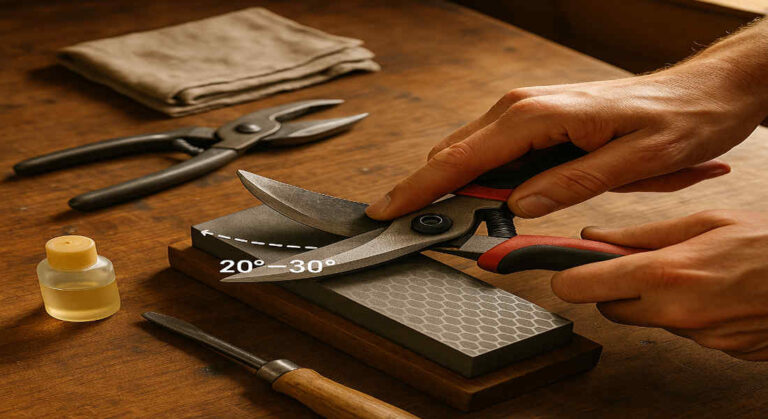Maintaining your garden tools is one of the most critical aspects of gardening, and sharp garden shears play a crucial role in keeping plants healthy and ensuring efficient work. Over time, however, even the best garden shears lose their sharpness, making it harder to prune, trim, or cut plants effectively. Luckily, you don’t always need professional help or expensive tools to restore their sharpness.
Why Sharp Garden Shears Are Essential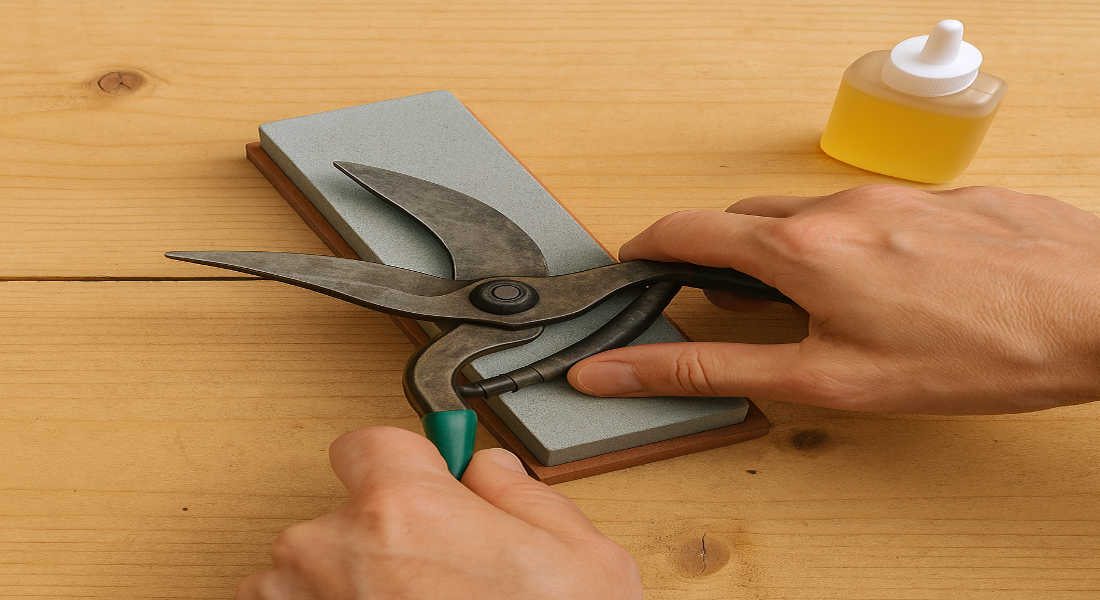
Garden shears are versatile tools that help in pruning plants, trimming hedges, and maintaining the overall health of your garden. However, dull shears can cause more harm than good. Let’s explore why keeping them sharp is so important:
- Healthy Cuts for Plants: Sharp blades make clean cuts, which heal faster and reduce the risk of infections in plants.
- Increased Efficiency: Dull shears require more force, making gardening tasks exhausting and time-consuming.
- Extended Tool Lifespan: Properly maintaining your shears ensures they last longer, saving you money in the long term.
So, how can you tell when it’s time to sharpen your garden shears? Let’s take a closer look.
Understanding Your Garden Shears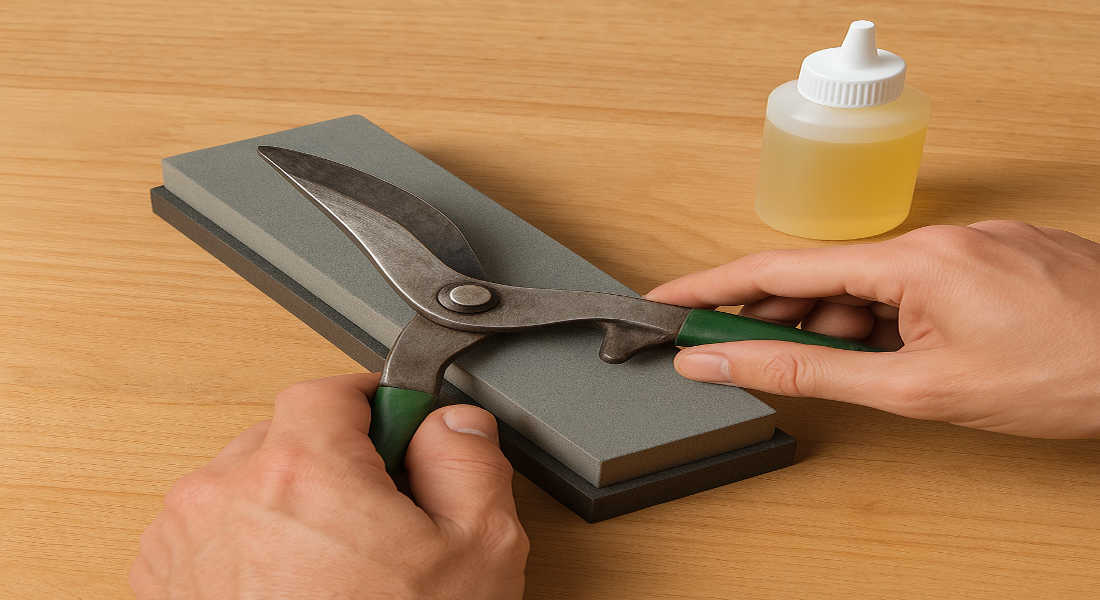
Before diving into sharpening techniques, it’s essential to understand the various types of garden shears and how dull blades impact their performance.
You may also read (how can i secure my house garden).
Types of Garden Shears
There are three main types of garden shears:
- Bypass Shears: These work like scissors, with two blades passing by each other to make a clean cut.
- Anvil Shears: These have a single sharp blade that closes against a flat surface, making them ideal for cutting thicker branches.
- Hedge Shears: Designed for trimming hedges, these shears feature long blades that allow for reaching farther areas.
Signs Your Shears Need Sharpening
If you’re facing any of these issues, it’s time to sharpen your shears:
- Snagging or Crushing Stems: Instead of making clean cuts, dull blades crush or tear plant stems.
- Difficulty Cutting: You need to use excessive force to make cuts.
- Visible Rust or Damage: Rusty blades lose their sharpness and efficiency over time.
Why Sharpen Shears Without a File?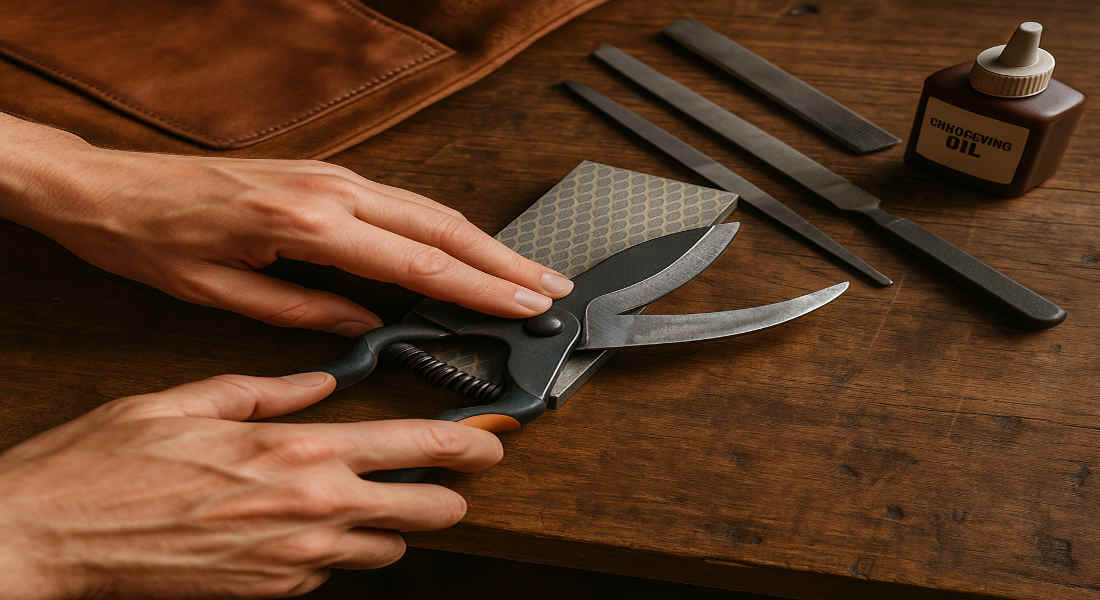
When most people think of sharpening, they imagine using a file. However, there are several good reasons to explore alternative methods.
Limitations of Using a File
- Files may not be readily available in every household.
- They require a certain level of skill to use effectively.
- Misusing a file can damage your blades.
Advantages of Alternative Methods
- Ease and Accessibility: Tools like whetstones, steel wool, or carbide sharpeners are easier to use and often more accessible.
- Safety: Some alternatives reduce the risk of accidentally damaging the blade or injuring yourself.
- Cost-Effective: Many of these tools are inexpensive or already found at home.
Preparing Your Shears for Sharpening
Before you start sharpening, it’s crucial to clean your shears thoroughly. This ensures the sharpening process is more effective and prevents further damage to the blades.
Cleaning the Blades
- Remove Dirt and Sap: Use warm, soapy water and a soft cloth to wipe off dirt, sap, and grime.
- Tackle Rust: For rust build-up, use fine steel wool or a rust-removing solution.
- Apply Household Oil: Once clean, apply a few drops of oil or WD-40 to the blades to prevent further rust.
Safety Precautions
- Wear gloves to protect your hands from sharp edges.
- Always keep the shears pointed away from your body while cleaning.
Step-by-Step Guide: How to Sharpen House Garden Shears Without a File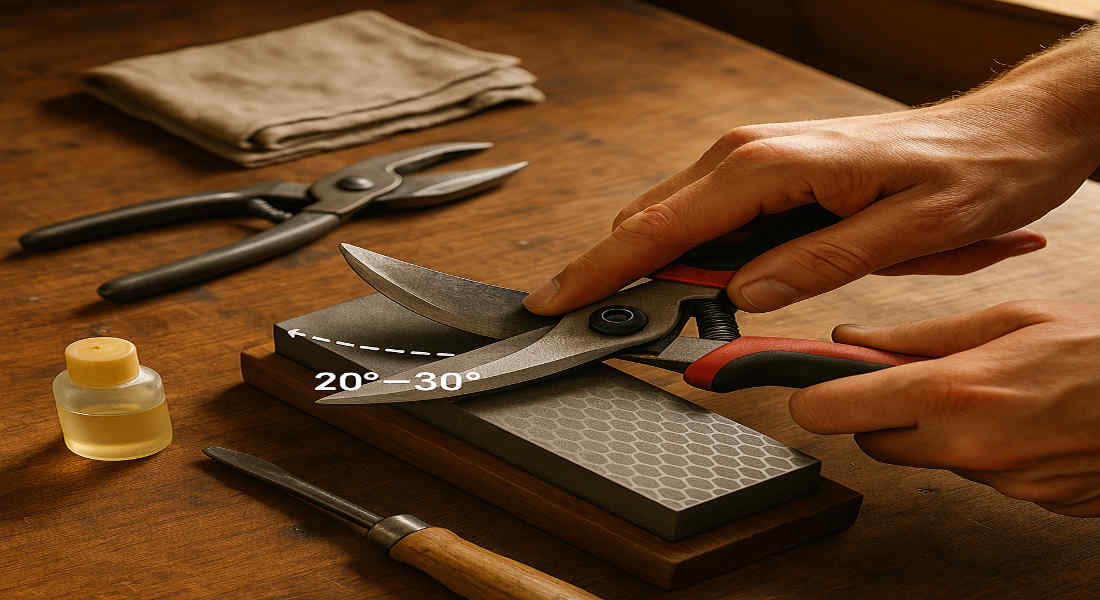
Let’s dive into the actual sharpening process using tools such as whetstones, steel wool, or carbide sharpeners.
Disassemble Your Shears (Optional but Recommended)
Disassembling your shears makes sharpening more precise and manageable.
- Use a screwdriver or Wrench to remove the central bolt.
- Separate the two blades carefully.
- Lay the blades flat on a sturdy surface.
You may also read (5 best plywood types for house roofing).
Pro Tip: If you’re unsure about reassembling the shears, take a photo before disassembling them.
Sharpening with a Whetstone or Carbide Sharpener
- Prepare the Whetstone: Soak the stone in water for at least 10 minutes.
- Position the Blade: Hold the blade at a 20-30 degree angle to the whetstone.
- Sharpen in Strokes: Move the blade across the stone in smooth, even strokes, always sharpening in one direction.
- Use a Carbide Sharpener: If you have one, run the sharpener along the beveled edge of the blade.
Polishing with Steel Wool
Steel wool is excellent for polishing and refining the blade’s edge.
- Gently rub the edge of the blade with fine-grade steel wool.
- Focus on removing any remaining rust or burrs.
- Wipe the blades clean with a damp cloth.
Reassembling and Maintaining Your Shears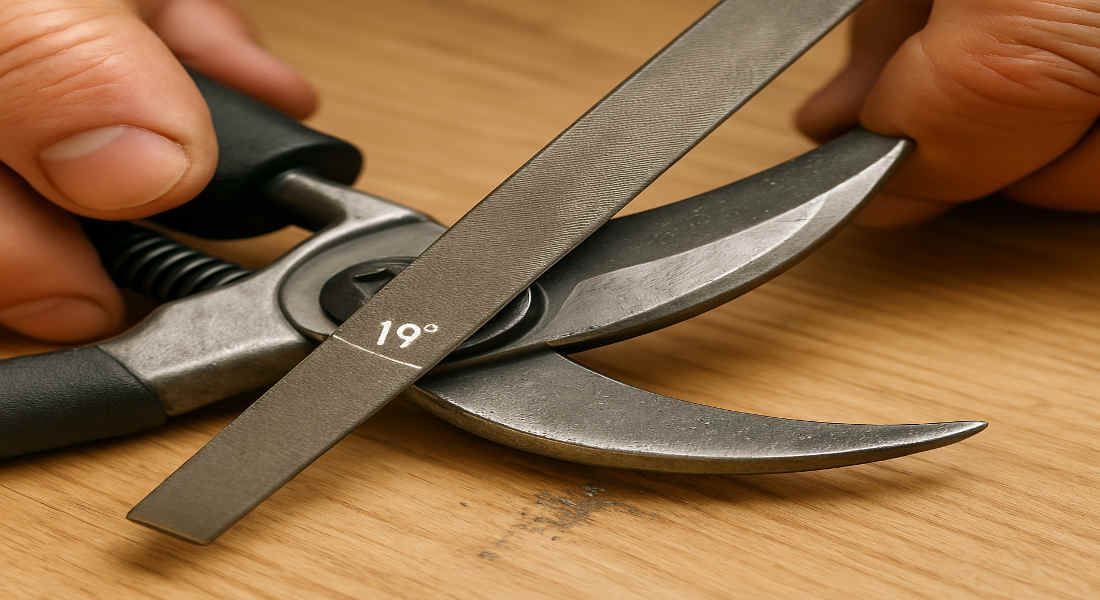
Once your blades are sharp, it’s time to reassemble everything.
Reassembling the Shears
- Reattach the blades and tighten the central bolt.
- Test the shears by making a few cuts on a branch or paper.
Maintenance Tips
- Lubricate Regularly: Apply oil to the pivot point and blade edges to prevent rust from forming.
- Store Properly: Keep your shears in a dry, clean place to avoid moisture damage.
Additional Tips and Tricks
Here are some extra tips to keep your garden shears in top condition:
- Clean After Every Use: Wipe your shears with a damp cloth after each use to prevent sap buildup.
- Avoid Over-Sharpening: Too much sharpening can wear down the blades over time.
- Consider Professional Help: If the blades are severely damaged, it might be worth seeking professional sharpening services.
Common Mistakes to Avoid
Avoid these common pitfalls to ensure your sharpening efforts are successful:
- Sharpening at the Wrong Angle: Always stick to a 20-30-degree angle for optimal sharpness.
- Ignoring Blade Alignment: Misaligned blades can affect cutting efficiency.
- Over-Sharpening: Excessive sharpening can weaken the blades.
Tools and Materials Checklist
Here’s a quick checklist of everything you’ll need:
Tool/Material Purpose
Whetstone or Carbide Sharpener: Sharpening the blades
Steel Wool Polishing and rust removal
Warm, Soapy Water Cleaning the blades
Household Oil or WD-40 Lubrication and rust prevention
Screwdriver or Wrench Disassembling the shears
You may also read (home gardening for beginners).

